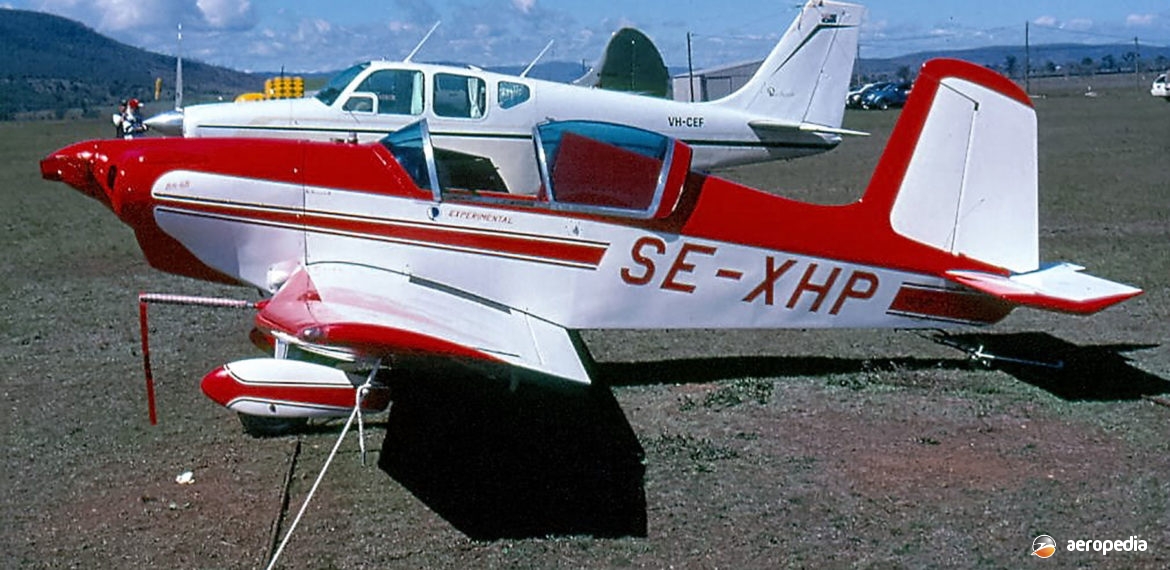Photograph:
Andreasson BA-6B SE-XHP (c/n 3-009) [later VH-XHP] at Watts Bridge, QLD (David C Eyre)
Country of origin:
Sweden
Description:
Single-seat light sport monoplane
Power Plant:
One 48 kw (65 hp) Continental A-65 four-cylinder horizontally-opposed air-cooled engine
Specifications:
- Wingspan: 7.01 m (23 ft)
- Length: 5.02 m (16 ft 5in)
- Wing area: 9.1 m ² (98 sq ft)
- Max speed: 225 km/h (140 mph)
- Cruising speed: 185 km/h (115 mph)
- Loaded weight: 454 kg (1,000 lb)
History:
In November 1942 Bjorn Andreasson (1917 – 1993) formed AB Flygindustri at Halmstad in Sweden and over the years designed a number of aircraft, the first being known as the FI-1. In 1944 he built an aerobatic biplane, known as the BA-4 Midget, of all-wood construction fitted with a 21 kw (28 hp) engine and the first aircraft (SE-ANS) was flown but, due to propeller problems, was re-engined with a 30 kw (40 hp) engine.
In about 1965 the Swedish chapter of the Experimental Aircraft Association (EAA) updated the design for amateur construction. A number of examples were built with engines in the 30 kw (40 hp) to 75 kw (100 hp) range, and examples were fitted with the Continental O-200 engine. Andreasson later became the Special Projects Director for Saab-Scania, and later went to and worked with Convair in San Diego, USA until eventually he returned to Sweden to direct the production of new aircraft.
The BA-6 was a single-seat low-wing light sport monoplane, also designed by Bjorn Andreasson, two aircraft initially being built by Erik Johnsson of Brunflo in Sweden. Construction of the first aircraft began in 1951 and both were completed by 1954, becoming SE-BXX and SE-BXY. These two aircraft were fitted with a 48 kw (65 hp) Continental A65 engine and were of all-wood construction, the control surfaces being fabric covered. Although not marketed, plans were made available and examples have been built around the world. One was modified and became the BA-6B (SE-XHP). This aircraft was imported to Australia, becoming VH-XHP (c/n 3-009) registered to its owner at Woody Point, QLD.
Further development has taken place, leading to the BA-7 through to the BA-11, with engines ranging up to the Lycoming AEIO-360-B4A. The BA-7 was developed in the United States initially and placed in production at the Bulltofta, Malmo facility in Sweden as the SAAB MFI-9 military trainer and light attack aircraft through to the MFI-15 trainer for the Swedish Air Force.

